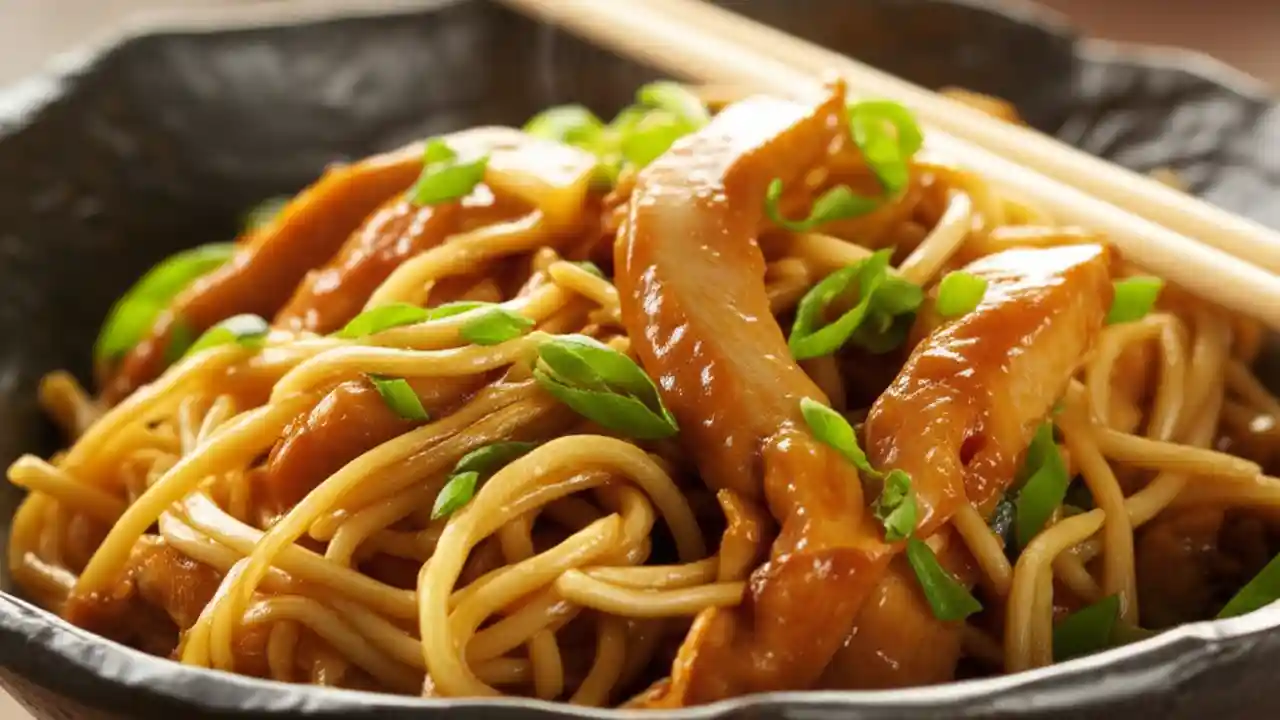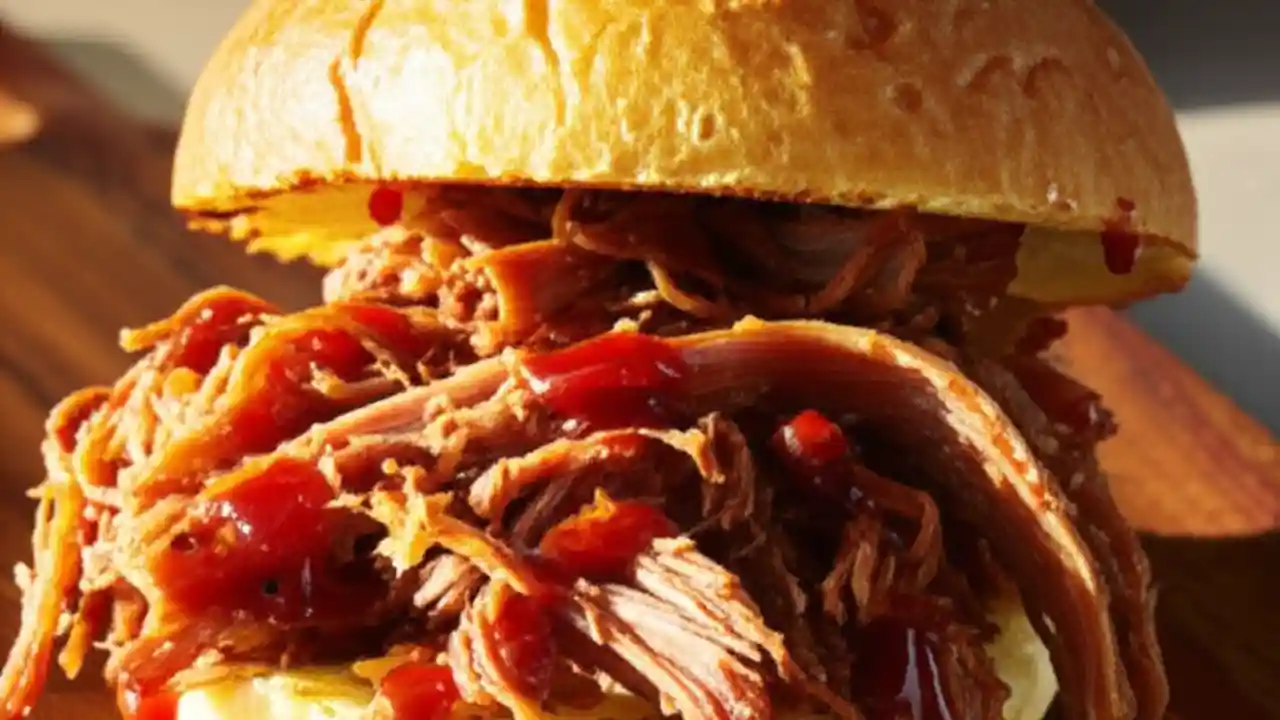Stepping into the kitchen, many of us dream of creating delicious treats that also nourish our bodies. The quest for “The Best Healthy Flours for Baking” is a common one, and after two decades of exploring every grain, nut, and seed, I can confidently say that the best healthy flours for baking are not a single answer, but rather a diverse family including nutrient-dense whole wheat, versatile oat, protein-rich almond, and fiber-packed coconut flours. These options offer a fantastic balance of nutritional benefits, unique flavors, and varied textures, transforming your everyday bakes into guilt-free delights. This comprehensive guide will delve into what makes a flour truly healthy, explore the top contenders in both gluten-free and gluten-containing categories, provide practical baking tips, and help you choose the perfect healthy flour for your next culinary adventure.
Table of Contents
Understanding Healthy Flours: More Than Just ‘Whole’
What makes a flour “healthy” for baking?
When we talk about “healthy” flours, we’re looking beyond simple white flour, which is often stripped of its vital nutrients. A truly healthy flour retains its natural goodness, offering a wealth of fiber, protein, healthy fats, vitamins, and minerals. Think of it as eating the whole food, not just a refined part of it. This includes the bran, germ, and endosperm – each contributing unique health benefits. Fiber aids digestion and stabilizes blood sugar, protein helps with satiety and muscle repair, and healthy fats contribute to brain health and nutrient absorption. The more nutrients a flour packs, the healthier it generally is for your baking and your body.
Are all whole grain flours good choices for healthy baking?
Generally, yes, most whole grain flours are excellent choices. They naturally contain the entire grain kernel, meaning they haven’t been processed to remove the nutrient-rich bran and germ. This preserves their fiber, B vitamins, iron, magnesium, and other essential nutrients. However, “whole grain” is a broad term. Some, like whole wheat, are more commonly used, while others, like rye or spelt, offer unique flavor profiles and slightly different nutritional compositions. The “goodness” also depends on your specific dietary needs, such as gluten sensitivity or carbohydrate intake goals. My advice? Embrace the variety!
What’s the difference between gluten-free and gluten-containing healthy flours?
The primary difference lies in the presence of gluten, a protein composite found in wheat, barley, rye, and triticale. Gluten-containing flours, like whole wheat or spelt, provide elasticity and structure to baked goods, making them ideal for yeasted breads and chewy textures. Gluten-free flours, such as almond, coconut, or oat, lack this protein and require different handling in baking. They often need binders (like xanthan gum) or combinations of different flours to achieve desirable textures. Both categories offer incredibly healthy options, catering to different dietary needs and baking preferences. For those with celiac disease or gluten sensitivity, gluten-free is a must; for others, both open up a world of healthy baking possibilities.
How do healthy flours impact the texture and flavor of baked goods?
This is where the real fun begins! Each healthy flour brings its own personality to your baked goods. Whole wheat adds a hearty, nutty flavor and a denser texture. Almond flour lends a delicate richness and a tender crumb, perfect for cakes and cookies. Coconut flour is incredibly absorbent, resulting in moist bakes with a subtle tropical hint. Oat flour creates a soft, chewy texture. Understanding these nuances is key to successful healthy baking. For instance, if you’re aiming for a light, airy cake, you might lean towards almond or a blend, while a robust, rustic bread calls for whole wheat or spelt. It’s a delightful journey of experimentation.
Spotlight on Gluten-Free Healthy Flours
Is almond flour really healthy, and what’s it best for?
Absolutely! Almond flour, made from blanched, ground almonds, is a superstar in healthy baking. It’s low in carbohydrates, high in protein, packed with healthy monounsaturated fats, and a good source of vitamin E and magnesium. It’s a fantastic option for those following ketogenic, paleo, or gluten-free diets. In my kitchen, almond flour shines in:
- Cakes and Muffins: It creates a tender, moist crumb.
- Cookies: Chewy and delightful, especially for shortbread or macaroons.
- Pancakes and Waffles: Light and fluffy with a delicate flavor.
- Breading: A delicious, crispy, and healthier alternative for chicken or fish.
Just remember it’s denser than wheat flour and often requires more egg or liquid to bind. It doesn’t brown as quickly, so adjust baking times or temperatures accordingly.
What are the benefits of baking with coconut flour, and how do I use it?
Coconut flour is a unique powerhouse, renowned for its incredible fiber content – far more than any other flour! It’s also low in carbs and a good source of protein. Its benefits include supporting digestion, promoting satiety, and stabilizing blood sugar. However, its high absorbency is its defining characteristic. This means you need significantly less coconut flour than other flours, and it requires a lot more liquid (and often more eggs) to prevent your bakes from becoming dry and crumbly. My top tips for using coconut flour:
- Start with substituting only 1/4 to 1/3 of the regular flour amount.
- Increase liquid and egg content significantly; eggs act as a binder.
- It’s excellent for dense muffins, quick breads, and fudgy brownies.
- Its subtle coconut flavor pairs wonderfully with chocolate and fruit.
Don’t be afraid to experiment, but start small! A little coconut flour goes a long way.
Can oat flour be used for healthy baking, and is it gluten-free?
Yes, oat flour is a fantastic healthy baking option! Made from finely ground rolled oats, it’s rich in soluble fiber (beta-glucans), which can help lower cholesterol and regulate blood sugar. It also provides a good amount of protein and various vitamins and minerals. Oat flour creates a soft, chewy texture and has a mild, slightly nutty flavor that blends well in most recipes. While oats are naturally gluten-free, cross-contamination can occur during processing. If you have celiac disease, always choose certified gluten-free oat flour. I often use oat flour in:
- Cookies: For a delightful chewiness.
- Muffins and Quick Breads: Adds moisture and a tender crumb.
- Pancakes and Waffles: Makes them incredibly fluffy.
- Thickening Agent: Great for gravies and sauces.
It can often be substituted for up to 25-50% of wheat flour in recipes, sometimes even 100% in certain applications like pancakes.
What are some other lesser-known but healthy gluten-free flours like buckwheat or sorghum?
Beyond the popular choices, the gluten-free world offers a treasure trove of healthy flours. Two personal favorites are buckwheat and sorghum:
Buckwheat Flour: Despite its name, buckwheat is not related to wheat; it’s a naturally gluten-free pseudocereal. It’s high in fiber, protein, and antioxidants, with a distinctive earthy, slightly bitter flavor. It’s fantastic for:
- Pancakes and crepes (think traditional blini!)
- Rustic breads when combined with other flours.
- Adding depth to cookies and muffins.
Sorghum Flour: A mild-flavored, nutrient-dense whole grain, sorghum flour is rich in fiber, protein, and iron. It has a slightly sweet taste and a smooth texture, making it a versatile gluten-free option. It’s excellent for:
- Cookies, cakes, and quick breads (often blended with other GF flours).
- Replacing lighter wheat flours in some recipes.
Exploring these less common flours can really open up new flavor and texture dimensions in your healthy baking.
Embracing Gluten-Containing Whole Grain Flours
Why is whole wheat flour considered a healthy option, and what are its uses?
Whole wheat flour is the classic healthy choice for a reason. Unlike refined white flour, it contains the entire wheat kernel – the bran, germ, and endosperm. This means it’s packed with dietary fiber, B vitamins, iron, magnesium, and other essential nutrients that support heart health, digestion, and energy levels. Its robust, nutty flavor and denser texture make it perfect for a variety of healthy bakes. In my experience, whole wheat flour excels in:
- Breads: From hearty loaves to whole wheat sourdough.
- Muffins and Quick Breads: Adds substance and a wholesome flavor.
- Pancakes and Waffles: Creates a satisfying, filling breakfast.
- Cookies: Can be used for a chewier, more rustic cookie.
For a lighter whole wheat option, try white whole wheat flour, which comes from a different type of wheat berry but still retains all the whole grain benefits with a milder flavor and lighter color.
How does spelt flour compare to traditional whole wheat for health and baking?
Spelt flour is an ancient grain, a cousin to modern wheat, and a fantastic healthy alternative. Nutritionally, it’s quite similar to whole wheat, offering good amounts of fiber, protein, and minerals like iron and magnesium. However, its gluten structure is different – it’s more water-soluble and easier to digest for some people with mild gluten sensitivities (though it’s NOT gluten-free). From a baking perspective, spelt has a slightly sweeter, nuttier flavor than whole wheat and tends to produce a lighter, more tender crumb. It’s often easier to work with than whole wheat for those new to whole grain baking. I love using spelt for:
- Artisan Breads: It yields beautiful loaves with a lovely chew.
- Pastries: Can create flakier crusts than whole wheat.
- Muffins and Scones: For a delicate yet wholesome texture.
It can often be substituted cup-for-cup for regular whole wheat flour in many recipes, making it a simple swap for a healthy upgrade.
Mastering the Art of Baking with Healthy Flours
How do I substitute healthy flours in my favorite recipes?
Substituting healthy flours isn’t always a simple 1:1 swap, as each flour has unique properties. However, with a few guidelines, you’ll be a pro in no time! Here’s a general substitution guide I use:
| Healthy Flour | Substitution Ratio (for All-Purpose Flour) | Key Adjustments | Best Uses for Substitution |
|---|---|---|---|
| Whole Wheat Flour | 1:1 (or 50-75% for lighter results) | May need slightly more liquid (1-2 tbsp per cup). Results in denser, nuttier bakes. | Breads, muffins, cookies, pancakes. |
| Almond Flour | 25-35% of AP flour (by volume) | Requires more eggs/liquid for binding. Reduces liquid elsewhere. | Cakes, cookies, quick breads (often combined with other flours). |
| Coconut Flour | 1/4 – 1/3 of AP flour (by volume) | Significantly more liquid and eggs (e.g., 1 extra egg per 1/4 cup). | Dense muffins, brownies, quick breads, low-carb recipes. |
| Oat Flour | 1:1 (by weight); 1 cup AP = 1.25 cups Oat | May need slightly more liquid. Let batter rest for 10-15 min to absorb. | Cookies, muffins, pancakes, quick breads. |
| Spelt Flour | 1:1 (often directly interchangeable with whole wheat) | Similar to whole wheat; may need slightly less liquid than whole wheat. | Breads, muffins, cookies, pastries. |
My golden rule: When in doubt, start with a 25-50% substitution to get a feel for the flour, then gradually increase as you gain confidence. Always check the consistency of your batter and adjust liquid as needed. Baking is an art, and healthy baking even more so!
What common mistakes should I avoid when baking with alternative flours?
After years of experimenting, I’ve seen (and made!) them all. Here are the top mistakes to avoid:
- Treating all flours equally: Don’t expect a 1:1 substitution to work for everything. Each flour has a unique absorption rate and gluten content (or lack thereof).
- Not adding enough liquid/eggs for coconut or almond flour: These flours are thirsty! Without enough moisture and binders, your bakes will be dry and crumbly.
- Over-mixing gluten-containing whole grain flours: Whole wheat and spelt can develop gluten quickly, leading to tough bakes if over-mixed. Mix just until combined.
- Ignoring the importance of weight measurements: Especially with gluten-free flours, volume measurements can be inconsistent. Investing in a kitchen scale will dramatically improve your results.
- Giving up after one try: Healthy baking requires patience and adjustment. If a recipe doesn’t turn out perfectly the first time, learn from it and try again!
Do healthy flours require different leavening agents or liquid amounts?
Yes, often they do! The simple answer is that healthy flours, especially gluten-free ones, interact differently with leavening agents and absorb liquids in unique ways. For instance:
- Gluten-Free Flours: Since they lack gluten, they don’t trap gases from leavening agents (like baking soda or powder) as effectively. You might need to use a bit more leavening, or incorporate binders like xanthan gum or psyllium husk to provide structure and trap those gases, ensuring your bakes rise.
- Coconut Flour: Its extreme absorbency means you’ll need significantly more liquid than traditional recipes call for. It also benefits from extra eggs to provide structure and moisture.
- Whole Wheat/Spelt: These can absorb more liquid than white flour, so you might need to add a tablespoon or two more per cup to get the right consistency.
Always pay attention to the recipe’s specific instructions for the healthy flour you’re using, or be prepared to adjust based on your batter’s consistency.
Choosing the Right Healthy Flour for Your Needs
Which healthy flour is best for specific diets (e.g., low-carb, high-fiber)?
The “best” healthy flour truly depends on your dietary goals:
- Low-Carb/Keto: Almond flour and coconut flour are your top picks. They are naturally low in net carbohydrates and high in healthy fats and protein.
- High-Fiber: Coconut flour leads the pack, followed by whole wheat, oat, and buckwheat flours. These are fantastic for digestive health and satiety.
- High-Protein: Almond flour, oat flour, and chickpea (garbanzo bean) flour are excellent sources of plant-based protein, helping you feel fuller longer.
- Gluten-Free: Almond, coconut, oat (certified GF), buckwheat, sorghum, millet, and tapioca/arrowroot (for thickening) are all excellent choices.
Consider your personal health objectives first, then choose the flour that aligns best.
Where can I find high-quality healthy flours for baking?
Finding quality healthy flours has become incredibly easy over the years. You’ll typically find them in a few key places:
- Major Supermarkets: Most large grocery stores now carry a good selection of whole wheat, almond, coconut, and oat flours in their baking aisle or natural foods section.
- Health Food Stores: Stores like Whole Foods or Sprouts often have a wider variety, including organic options and less common flours like buckwheat or sorghum.
- Online Retailers: Amazon, Thrive Market, Bob’s Red Mill, and other specialized online stores offer an extensive range, often in bulk, which can be cost-effective if you bake frequently.
- Local Mills or Farmers’ Markets: For the freshest and sometimes most unique whole grain flours, check out local mills or farmers’ markets. This is where you might find truly artisanal options.
Always check expiration dates and consider buying in smaller quantities if you don’t bake often, as some healthy flours (especially those high in natural oils, like almond flour) can go rancid more quickly if not stored properly (e.g., in the refrigerator or freezer).
My personal tip for sourcing: Look for reputable brands known for their quality. For gluten-free flours, especially oat, ensure they are certified gluten-free if cross-contamination is a concern for you.
Conclusion
The journey to finding “The Best Healthy Flours for Baking” reveals a rich tapestry of options, each offering unique nutritional benefits and baking characteristics. Whether you’re embracing the hearty goodness of whole wheat, the delicate tenderness of almond flour, or the fibrous punch of coconut flour, there’s a healthy flour out there to elevate your bakes. By understanding their distinct properties and making smart substitutions, you can transform your kitchen into a hub of wholesome, delicious creations. So go ahead, experiment, and enjoy the countless benefits of baking with healthier flours! Share your favorite healthy flour discoveries with us or explore more of our baking guides.







